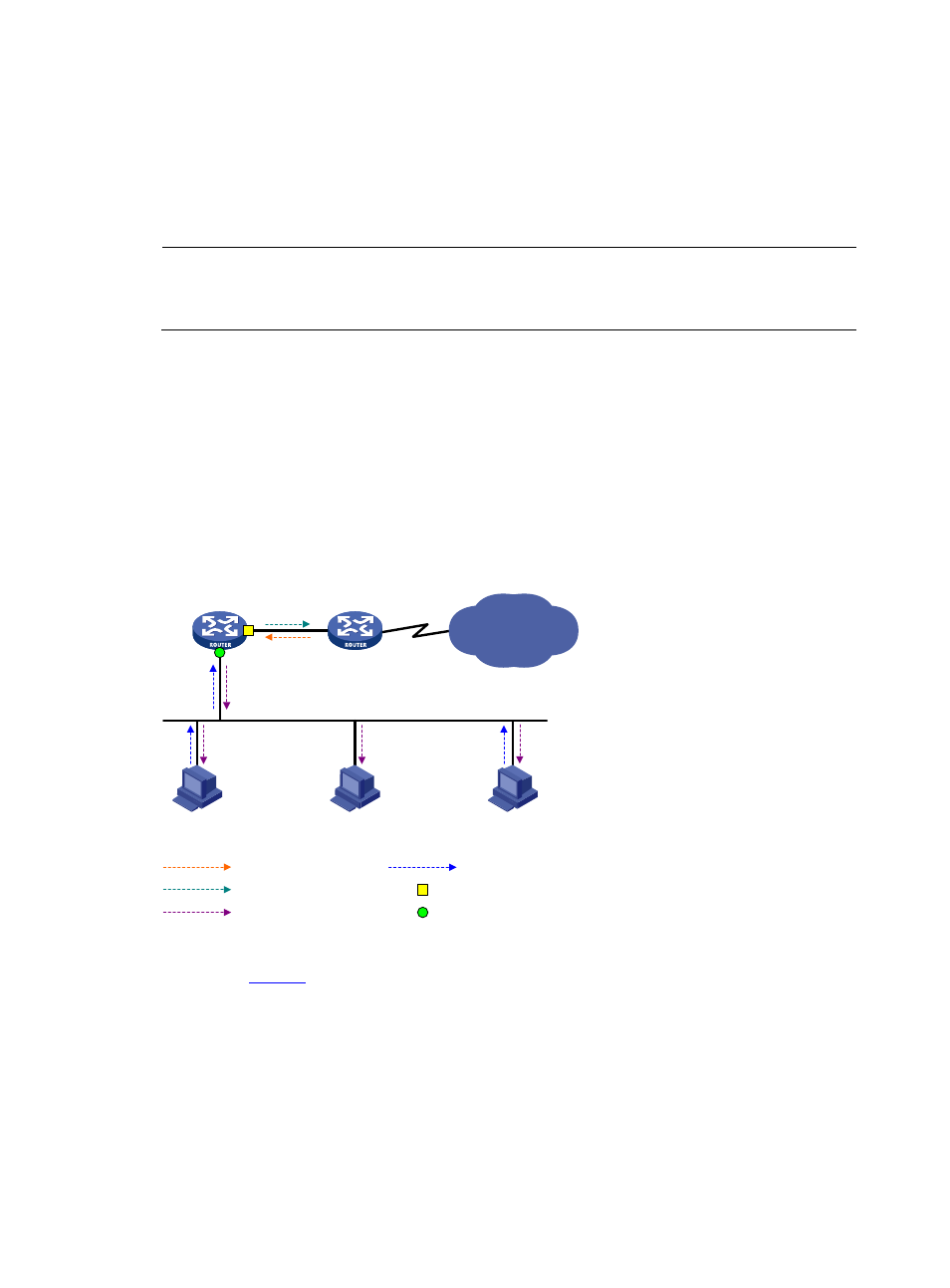Igmp proxying – H3C Technologies H3C SecPath F1000-E User Manual
Page 40

6
•
If G is in the SSM group range but no IGMP SSM mappings corresponding to the multicast group
G have been configured on Router A, Router A cannot provide SSM service and drops the message.
•
If G is in the SSM group range and the IGMP SSM mappings have been configured on Router A for
multicast group G, Router A translates the (*, G) information in the IGMP report into (G, INCLUDE,
(S1, S2...)) information based on the configured IGMP SSM mappings and provides SSM service
accordingly.
NOTE:
•
The IGMP SSM mapping feature does not process IGMPv3 reports.
•
For more information about the SSM group range, see
PIM Configuration in the IP Multicast Volume.
IGMP Proxying
In some simple tree topologies, it is not necessary to configure complex multicast routing protocols, such
as PIM, on the boundary devices. Instead, you can configure IGMP proxying on these devices. With
IGMP proxying configured, the device serves as a proxy for the downstream hosts to send IGMP
messages, maintain group memberships, and implement multicast forwarding based on the
memberships. In this case, each boundary device configured with IGMP proxying is a host but no longer
a PIM neighbor to the upstream device.
Figure 4 Network diagram for IGMP proxying
Query from Router A
Report from Router B
Ethernet
Router interface
Host interface
Proxy & Querier
Router B
Querier
Router A
Host B
Receiver
Host A
Receiver
Host C
Query from Router B
Report from Host
PIM domain
As shown in
, two types of interfaces are defined on an IGMP proxy device:
•
Upstream interface: Also referred to as the proxy interface. A proxy interface is an interface on
which IGMP proxying is configured. It is in the direction toward the root of the multicast forwarding
tree. An upstream interface acts as a host running IGMP; therefore, it is also called host interface.
•
Downstream interface: An interface that is running IGMP and in the direction contrary to the root of
the multicast forwarding tree. A downstream interface acts as a router running IGMP; therefore, it
is also called router interface.
A device with IGMP proxying configured maintains a group membership database, which stores the
group memberships on all the downstream interfaces. Each entry comprises the multicast address, filter
